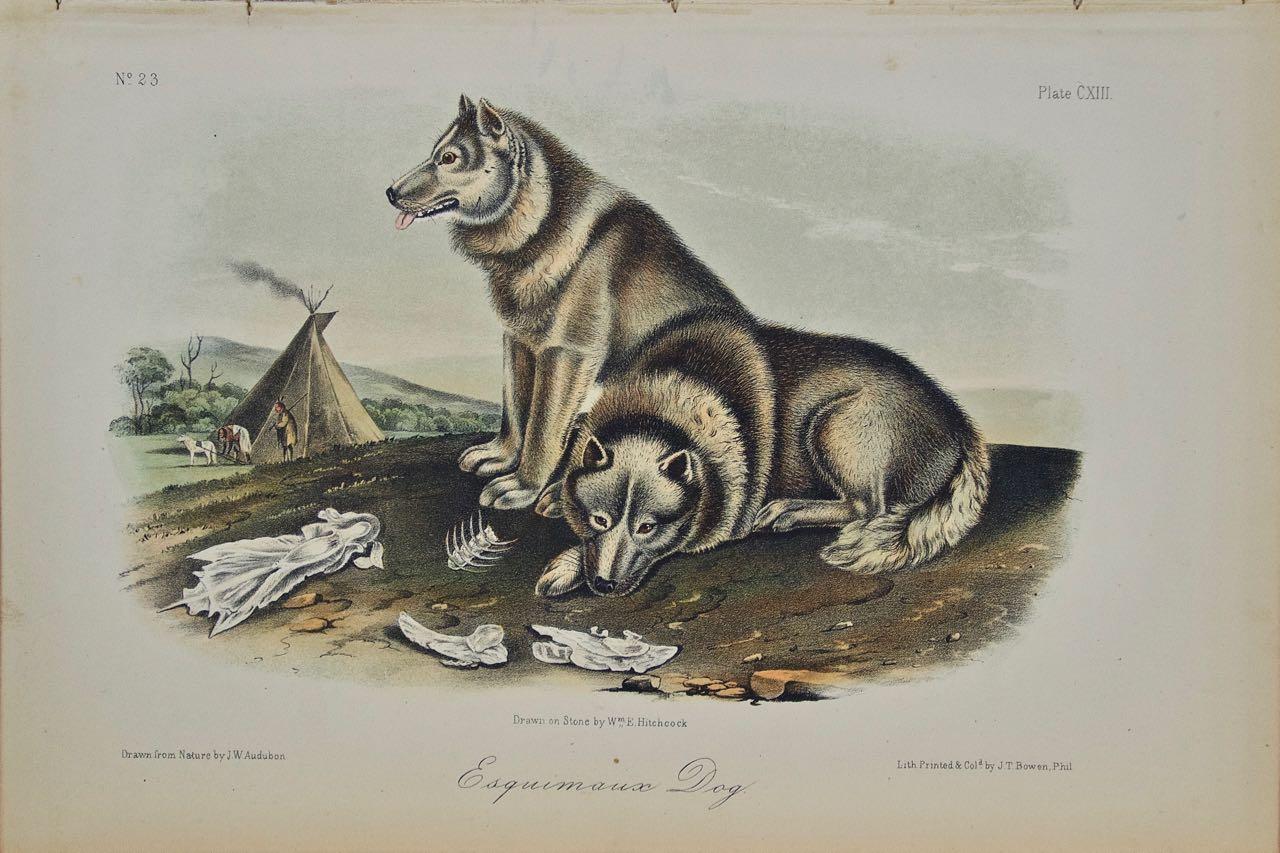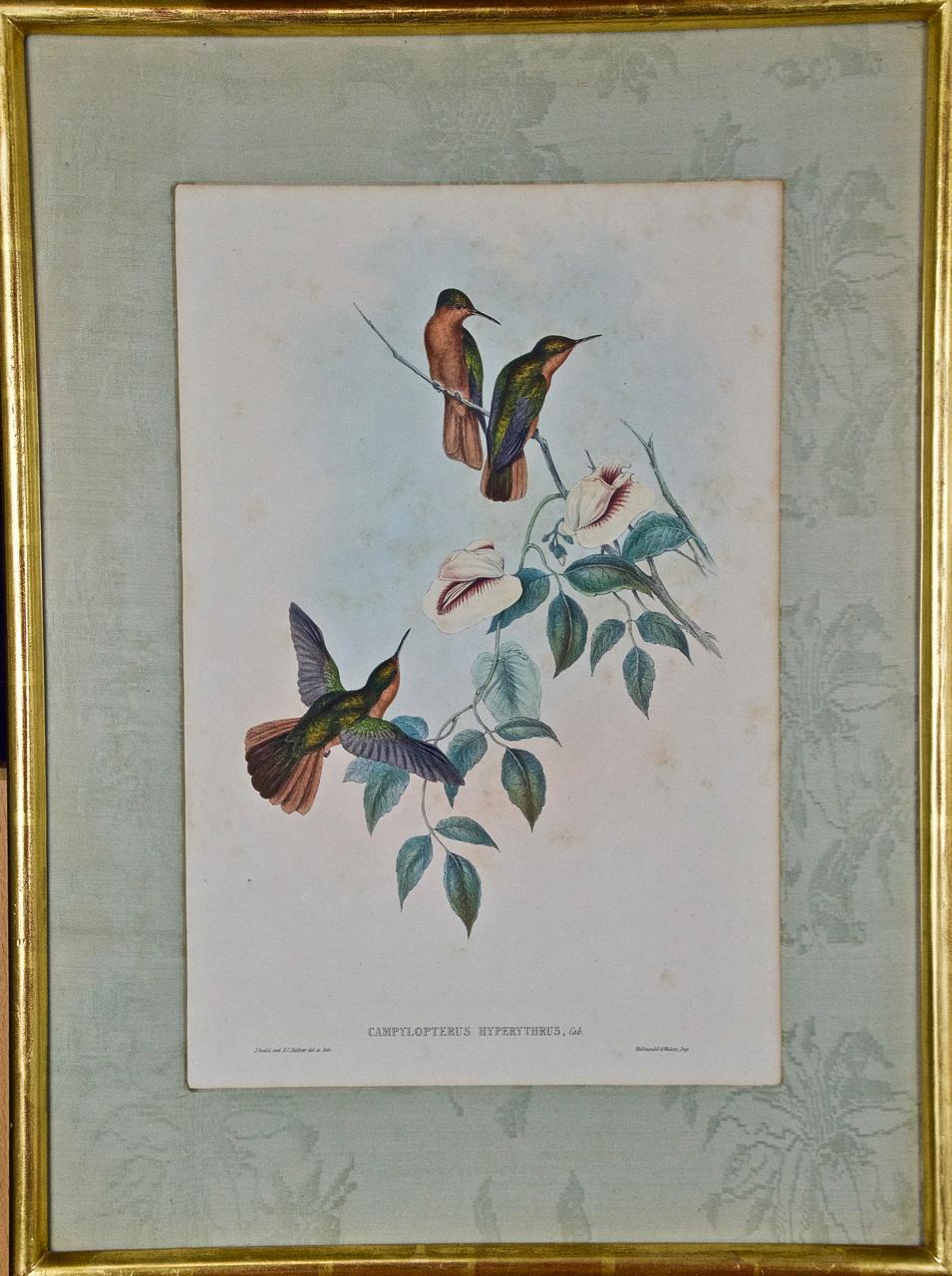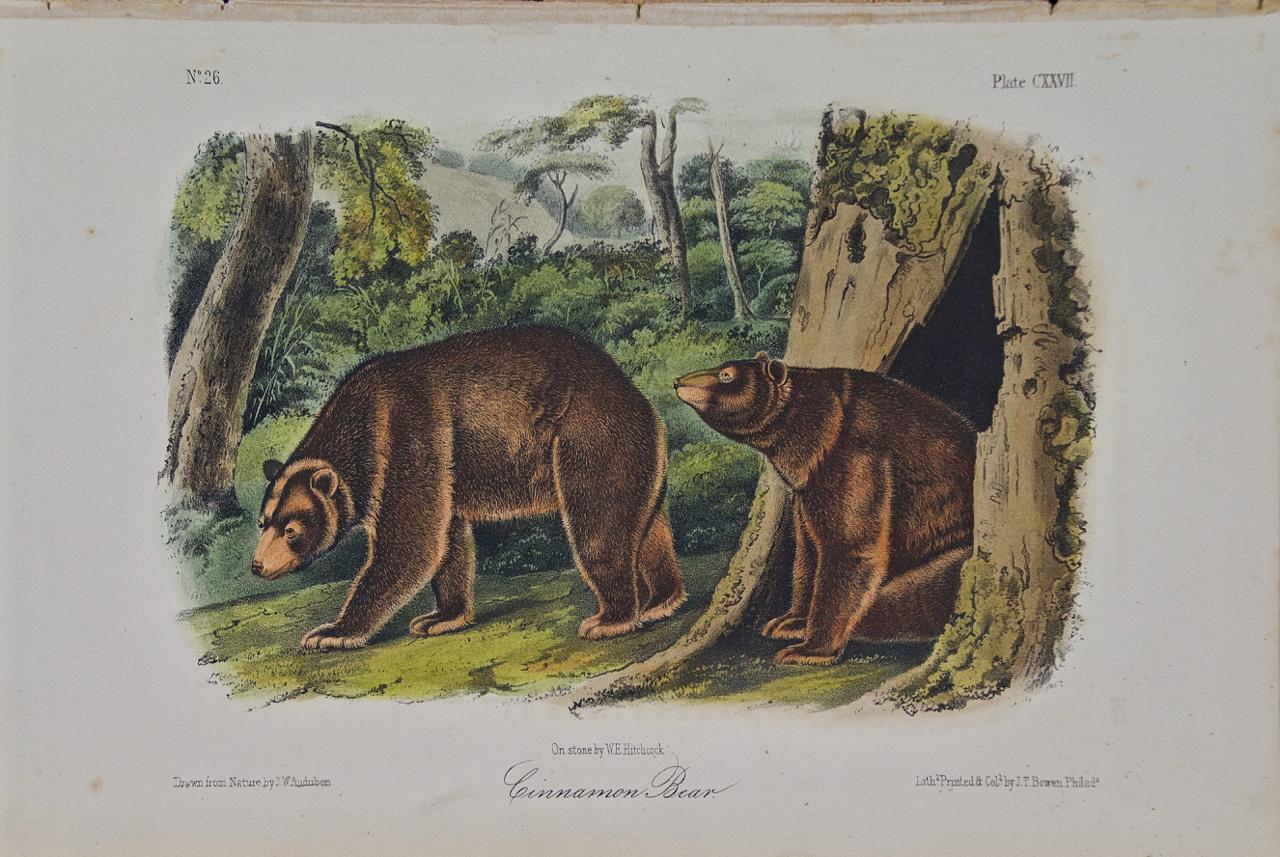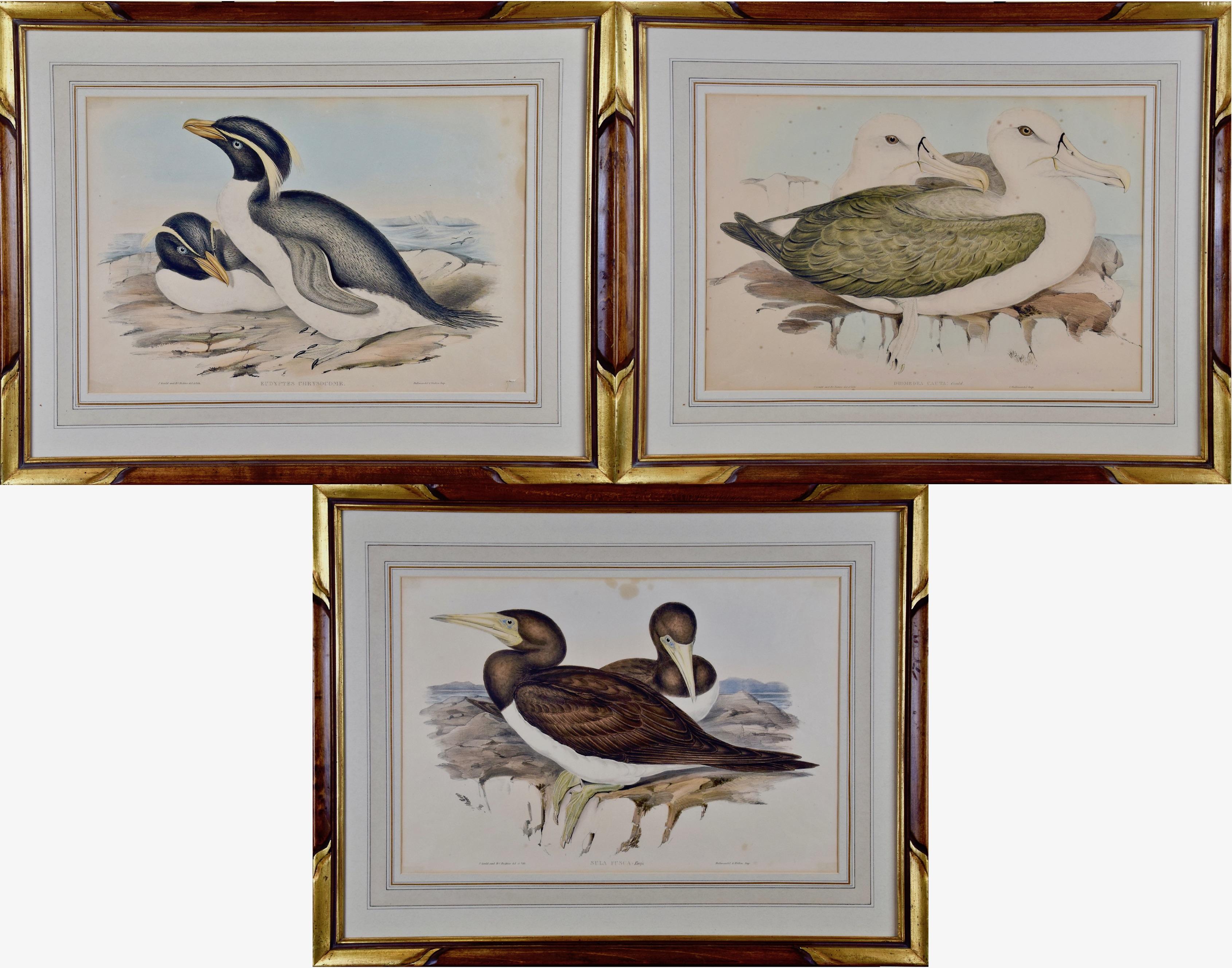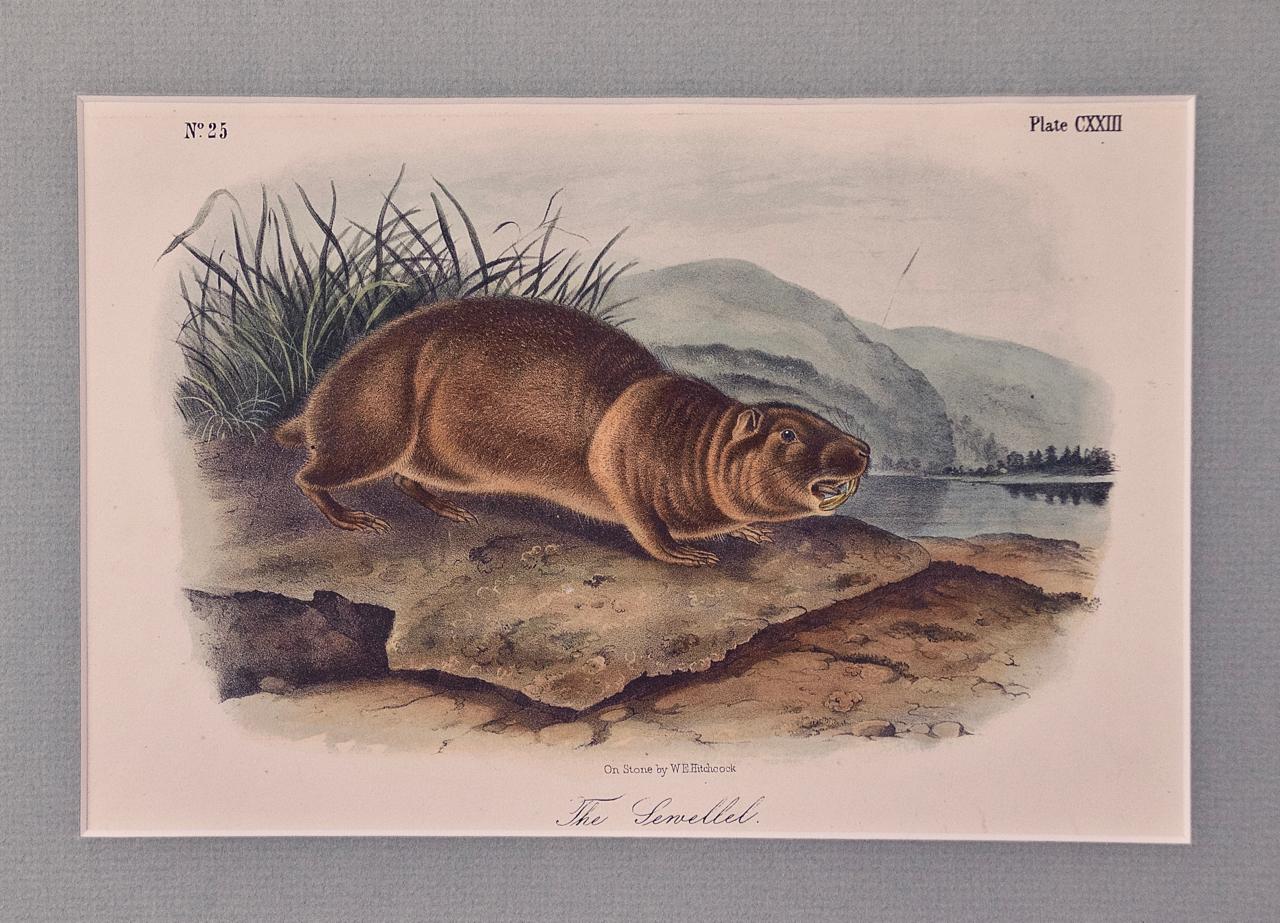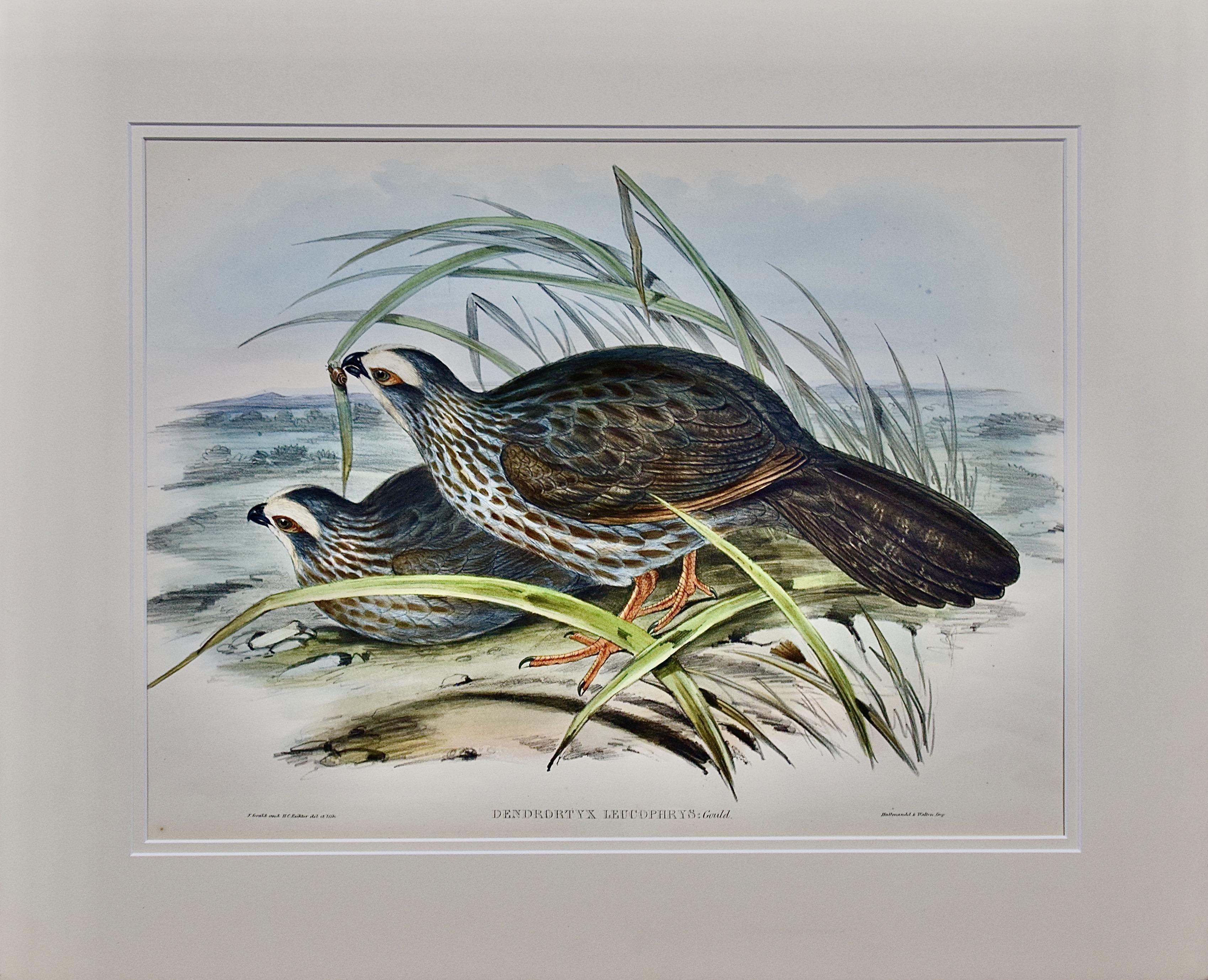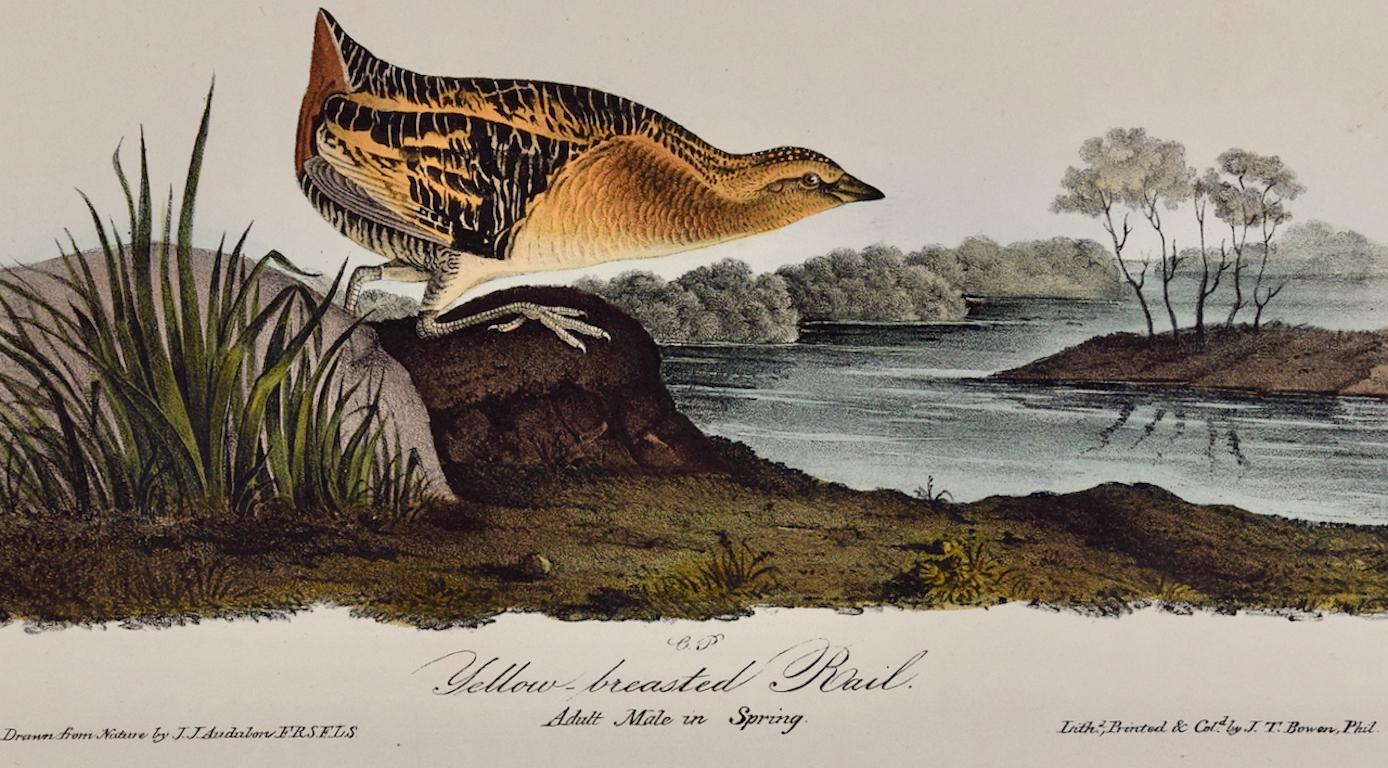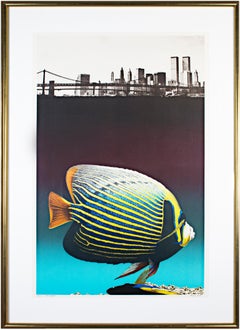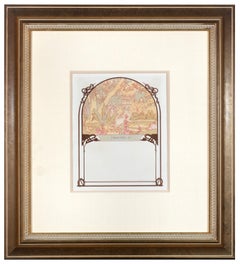
"Autumn on Lake George (Deer), " an Original Lithograph by Currier & Ives
View Similar Items
Want more images or videos?
Request additional images or videos from the seller
1 of 10
Currier & Ives"Autumn on Lake George (Deer), " an Original Lithograph by Currier & Ivesc. 1857
c. 1857
About the Item
- Creator:Currier & Ives (1834 - 1907, American)
- Creation Year:c. 1857
- Dimensions:Height: 17.625 in (44.77 cm)Width: 22 in (55.88 cm)
- Medium:
- Period:
- Condition:
- Gallery Location:Milwaukee, WI
- Reference Number:Seller: 7607g1stDibs: LU60532098223
About the Seller
4.9
Platinum Seller
These expertly vetted sellers are 1stDibs' most experienced sellers and are rated highest by our customers.
Established in 1966
1stDibs seller since 2017
388 sales on 1stDibs
Typical response time: 1 hour
More From This SellerView All
- "Please, Mister, Don't Be Careless" Vintage Poster featuring Disney CharactersLocated in Milwaukee, WIPrinted in 1943, by the U.S. Government Printing Office for the U.S. Department of Agriculture Forest Service. The poster features the beloved Disney characters, Bambi (deer), Thumper (rabbit), and Flower (skunk) in wide-eyed shock leaning towards fear. With the slogan "Please, Mister, don't be careless" the poster is designed to tug at the heartstrings of the viewer and make them consider what actions they could take in their own lives to prevent forest fires. Poster: 20" x 14 1/4" Frame: 30" x 22 1/2" Framed to conservation standards with a 100% cotton fiber matboard border and UV clear glass that filters 99% of UV Rays. UV Rays can be especially damaging and cause fading to the inks used in poster making. All of these features are housed in a contemporary natural wood frame. Smokey Bear...Category
1940s Other Art Style Animal Prints
MaterialsLithograph
- "Silent Witness, " pop art original lithograph collage realist abstract signedBy Michael KniginLocated in Milwaukee, WI"Silent Witness" is an original color lithograph by Michael Knigin. It features a realistic rendition of an Emperor Angelfish swimming in front of the New York skyline including the ...Category
1970s Pop Art Animal Prints
MaterialsLithograph
- "Ilsee's Palace" & "The Princess's Creation" Color Lithograph by Alphonse MuchaBy Alphonse MuchaLocated in Milwaukee, WI"Ilsee's Palace" and "The Princess's Creation" are two sides of one double-sided original lithograph by Art Nouveau master Alphonse Mucha. These illustrations were pages 67 & 68 of "...Category
1890s Art Nouveau Landscape Prints
MaterialsLithograph
- "Shooting on the Prairie, " Original Hand-colored Lithograph by Currier & IvesBy Currier & IvesLocated in Milwaukee, WI"Shooting on the Prairie" is an original hand-colored lithograph by Currier & Ives. It depicts a hunter shooting at fowl in an open field. 8 1/2" x 12 1/2" art 20 1/4" x 23 3/4" frame Nathaniel Currier was a tall introspective man with a melancholy nature. He could captivate people with his piercing stare or charm them with his sparkling blue eyes. Nathaniel was born in Roxbury, Massachusetts on March 27th, 1813, the second of four children. His parents, Nathaniel and Hannah Currier, were distant cousins who lived a humble yet spartan life. When Nathaniel was eight years old, tragedy struck. Nathaniel’s father unexpectedly passed away leaving Nathaniel and his eleven-year-old brother Lorenzo to provide for the family. In addition to their mother, Nathaniel and Lorenzo had to care for six-year-old sister Elizabeth and two-year-old brother Charles. Nathaniel worked a series of odd jobs to support the family, and at fifteen, he started what would become a life-long career when he apprenticed in the Boston lithography shop of William and John Pendleton. A Bavarian gentleman named Alois Senefelder invented lithography just 30 years prior to young Nat Currier’s apprenticeship. While under the employ of the brothers Pendleton, Nat was taught the art of lithography by the firm’s chief printer, a French national named Dubois, who brought the lithography trade to America. Lithography involves grinding a piece of limestone flat and smooth then drawing in mirror image on the stone with a special grease pencil. After the image is completed, the stone is etched with a solution of aqua fortis leaving the greased areas in slight relief. Water is then used to wet the stone and greased-ink is rolled onto the raised areas. Since grease and water do not mix, the greased-ink is repelled by the moisture on the stone and clings to the original grease pencil lines. The stone is then placed in a press and used as a printing block to impart black on white images to paper. In 1833, now twenty-years old and an accomplished lithographer, Nat Currier left Boston and moved to Philadelphia to do contract work for M.E.D. Brown, a noted engraver and printer. With the promise of good money, Currier hired on to help Brown prepare lithographic stones of scientific images for the American Journal of Sciences and Arts. When Nat completed the contract work in 1834, he traveled to New York City to work once again for his mentor John Pendleton, who was now operating his own shop located at 137 Broadway. Soon after the reunion, Pendleton expressed an interest in returning to Boston and offered to sell his print shop to Currier. Young Nat did not have the financial resources to buy the shop, but being the resourceful type he found another local printer by the name of Stodart. Together they bought Pendleton’s business. The firm ‘Currier & Stodart’ specialized in "job" printing. They produced many different types of printed items, most notably music manuscripts for local publishers. By 1835, Stodart was frustrated that the business was not making enough money and he ended the partnership, taking his investment with him. With little more than some lithographic stones, and a talent for his trade, twenty-two year old Nat Currier set up shop in a temporary office at 1 Wall Street in New York City. He named his new enterprise ‘N. Currier, Lithographer’ Nathaniel continued as a job printer and duplicated everything from music sheets to architectural plans. He experimented with portraits, disaster scenes and memorial prints, and any thing that he could sell to the public from tables in front of his shop. During 1835 he produced a disaster print Ruins of the Planter's Hotel, New Orleans, which fell at two O’clock on the Morning of the 15th of May 1835, burying 50 persons, 40 of whom Escaped with their Lives. The public had a thirst for newsworthy events, and newspapers of the day did not include pictures. By producing this print, Nat gave the public a new way to “see” the news. The print sold reasonably well, an important fact that was not lost on Currier. Nat met and married Eliza Farnsworth in 1840. He also produced a print that same year titled Awful Conflagration of the Steamboat Lexington in Long Island Sound on Monday Evening, January 18, 1840, by which melancholy occurrence over One Hundred Persons Perished. This print sold out very quickly, and Currier was approached by an enterprising publication who contracted him to print a single sheet addition of their paper, the New York Sun. This single page paper is presumed to be the first illustrated newspaper ever published. The success of the Lexington print launched his career nationally and put him in a position to finally lift his family up. In 1841, Nat and Eliza had their first child, a son they named Edward West Currier. That same year Nat hired his twenty-one year old brother Charles and taught him the lithography trade, he also hired his artistically inclined brother Lorenzo to travel out west and make sketches of the new frontier as material for future prints. Charles worked for the firm on and off over the years, and invented a new type of lithographic crayon which he patented and named the Crayola. Lorenzo continued selling sketches to Nat for the next few years. In 1843, Nat and Eliza had a daughter, Eliza West Currier, but tragedy struck in early 1847 when their young daughter died from a prolonged illness. Nat and Eliza were grief stricken, and Eliza, driven by despair, gave up on life and passed away just four months after her daughter’s death. The subject of Nat Currier’s artwork changed following the death of his wife and daughter, and he produced many memorial prints and sentimental prints during the late 1840s. The memorial prints generally depicted grief stricken families posed by gravestones (the stones were left blank so the purchasers could fill in the names of the dearly departed). The sentimental prints usually depicted idealized portraits of women and children, titled with popular Christian names of the day. Late in 1847, Nat Currier married Lura Ormsbee, a friend of the family. Lura was a self-sufficient woman, and she immediately set out to help Nat raise six-year-old Edward and get their house in order. In 1849, Lura delivered a son, Walter Black Currier, but fate dealt them a blow when young Walter died one year later. While Nat and Lura were grieving the loss of their new son, word came from San Francisco that Nat’s brother Lorenzo had also passed away from a brief illness. Nat sank deeper into his natural quiet melancholy. Friends stopped by to console the couple, and Lura began to set an extra place at their table for these unexpected guests. She continued this tradition throughout their lives. In 1852, Charles introduced a friend, James Merritt Ives, to Nat and suggested he hire him as a bookkeeper. Jim Ives was a native New Yorker born in 1824 and raised on the grounds of Bellevue Hospital where his father was employed as superintendent. Jim was a self-trained artist and professional bookkeeper. He was also a plump and jovial man, presenting the exact opposite image of his new boss. Jim Ives met Charles Currier through Caroline Clark, the object of Jim’s affection. Caroline’s sister Elizabeth was married to Charles, and Caroline was a close friend of the Currier family. Jim eventually proposed marriage to Caroline and solicited an introduction to Nat Currier, through Charles, in hopes of securing a more stable income to support his future wife. Ives quickly set out to improve and modernize his new employer’s bookkeeping methods. He reorganized the firm’s sizable inventory, and used his artistic skills to streamline the firm’s production methods. By 1857, Nathaniel had become so dependent on Jims’ skills and initiative that he offered him a full partnership in the firm and appointed him general manager. The two men chose the name ‘Currier & Ives’ for the new partnership, and became close friends. Currier & Ives produced their prints in a building at 33 Spruce Street where they occupied the third, fourth and fifth floors. The third floor was devoted to the hand operated printing presses that were built by Nat's cousin, Cyrus Currier, at his shop Cyrus Currier & Sons in Newark, NJ. The fourth floor found the artists, lithographers and the stone grinders at work. The fifth floor housed the coloring department, and was one of the earliest production lines in the country. The colorists were generally immigrant girls, mostly German, who came to America with some formal artistic training. Each colorist was responsible for adding a single color to a print. As a colorist finished applying their color, the print was passed down the line to the next colorist to add their color. The colorists worked from a master print displayed above their table, which showed where the proper colors were to be placed. At the end of the table was a touch up artist who checked the prints for quality, touching-in areas that may have been missed as it passed down the line. During the Civil War, demand for prints became so great that coloring stencils were developed to speed up production. Although most Currier & Ives prints were colored in house, some were sent out to contract artists. The rate Currier & Ives paid these artists for coloring work was one dollar per one hundred small folios (a penny a print) and one dollar per one dozen large folios. Currier & Ives also offered uncolored prints to dealers, with instructions (included on the price list) on how to 'prepare the prints for coloring.' In addition, schools could order uncolored prints from the firm’s catalogue to use in their painting classes. Nathaniel Currier and James Merritt Ives attracted a wide circle of friends during their years in business. Some of their more famous acquaintances included Horace Greeley, Phineas T. Barnum, and the outspoken abolitionists Rev. Henry Ward, and John Greenleaf Whittier (the latter being a cousin of Mr. Currier). Nat Currier and Jim Ives described their business as "Publishers of Cheap and Popular Pictures" and produced many categories of prints. These included Disaster Scenes, Sentimental Images, Sports, Humor, Hunting Scenes, Politics, Religion, City and Rural Scenes, Trains, Ships, Fire Fighters, Famous Race Horses, Historical Portraits, and just about any other topic that satisfied the general public's taste. In all, the firm produced in excess of 7500 different titles, totaling over one million prints produced from 1835 to 1907. Nat Currier retired in 1880, and signed over his share of the firm to his son Edward. Nat died eight years later at his summer home 'Lion’s Gate' in Amesbury, Massachusetts. Jim Ives remained active in the firm until his death in 1895, when his share of the firm passed to his eldest son, Chauncey. In 1902, faced will failing health from the ravages of Tuberculosis, Edward Currier sold his share of the firm to Chauncey Ives...Category
1870s Other Art Style Animal Prints
MaterialsLithograph
- 'Caribou in the Mist' original mixed media signed by Catherine HolmburgBy Catherine HolmburgLocated in Milwaukee, WIThe present object is an original artwork by Catherine Holmburg, made from a giclée print on canvas with added hand embellishments in acrylic. In the image, the viewer is presented w...Category
Early 2000s Contemporary Landscape Prints
MaterialsMixed Media, Acrylic, Giclée
- 'Caribou in the Mist' original mixed media signed by Catherine HolmburgBy Catherine HolmburgLocated in Milwaukee, WIThe present object is an original artwork by Catherine Holmburg, made from a giclée print with added hand embellishments. In the image, the viewer is presented with three caribou in...Category
Early 2000s Contemporary Landscape Prints
MaterialsMixed Media, Acrylic, Giclée
You May Also Like
- "Esquimaux Dog": An Original 19th C. Audubon Hand-colored Quadruped LithographBy John James AudubonLocated in Alamo, CAThis is an original John James Audubon hand-colored royal octavo lithograph entitled "Esquimaux Dog", No. 23, Plate CXIII, from Audubon's "Quadrupeds of North America". It was drawn ...Category
Mid-19th Century Naturalistic Animal Prints
MaterialsLithograph
- Caribou or American Reindeer: Original 19th C. Audubon Hand-colored LithographBy John James AudubonLocated in Alamo, CAThis is an original 19th century John James Audubon hand-colored quadruped lithograph entitled "Caribou or American Rein Deer", No. 26, Plate CXXVI, from Audubon's "Quadrupeds of Nor...Category
Mid-19th Century Naturalistic Animal Prints
MaterialsLithograph
- Hummingbirds: Framed Gould Antique Hand-Colored "Rufous-breasted Sabrewing"By John Gould and Henry Constantine RichterLocated in Alamo, CAThis is a framed hand-colored folio sized lithograph entitled "Campylopterus Hyperythrus" (Rufous-breasted Sabrewing Hummingbird), Plate 51 from John Gould's "A Monograph of the Trochilidae, or Family of Humming-birds", published in London in 1850. The print, which was drawn by Gould and Henry Richter and lithographed by Hullmandel and Walton, depicts three hummingbirds displaying multiple colors, including, green, blue and shades of brown highlights among burgundy and cream colored flowers. The hummingbirds are highlighted by bright iridescent metallic paint. This beautiful Gould hummingbird...Category
Mid-19th Century Naturalistic Animal Prints
MaterialsLithograph
- Cinnamon Bear: An Original 19th Century Audubon Hand-colored LithographBy John James AudubonLocated in Alamo, CAThis is an original 19th century John James Audubon hand colored lithograph entitled "Cinnamon Bear", No. 26, Plate CXXVII, 127 from Audubon's "Quadrupeds of North America", printed ...Category
Mid-19th Century Naturalistic Animal Prints
MaterialsLithograph
- Three Gould Hand-colored Lithographs from Birds of Australia and New ZealandBy John GouldLocated in Alamo, CAThree hand-colored lithographs from John Gould's seven volume book "The Birds of Australia", which included New Zealand, depicting: pairs of "Eudyptes Chrysocome" (New Zealand Rock-hopper Crested Penguins), "Diomedea O Thalassarche Cauta" (Australian Shy Albatross) and "Sula Fusca" (Brown Gannets). These beautiful sea bird prints are presented in identical very attractive brown wood frames, embellished with gold highlights in the corners and gold inner trim, along with light cream-colored French mats, each with a medium cream-colored band and a gold highlight line. There is scattered spotting. There is a small tear in the lower right corner of the penguin lithograph...Category
1840s Academic Animal Prints
MaterialsLithograph
- Summer GoldBy Millard SheetsLocated in Long Island City, NYArtist: Millard Owen Sheets, American (1907 - 1989) Title: Summer Gold Medium: Lithograph, signed and numbered in pencil Edition: 250, 5 HC Image S...Category
1970s American Modern Animal Prints
MaterialsLithograph
Recently Viewed
View AllMore Ways To Browse
Currier And Ives Prints
Currier And Ives Lithograph
Currier Ives Antique
Antique Currier And Ives
Table Grinder
Antique Currier Ives Prints
Street Fighter
Currier And Ives Antique Prints
Antique Currier And Ives Prints
Original Currier And Ives
Fire Fighter
Ives Train
Antique Sports Pictures
Deer Lake
Antique Hand Grinders
Cyrus The Great
Antique Grinder Table
Antique Stone Grinder
